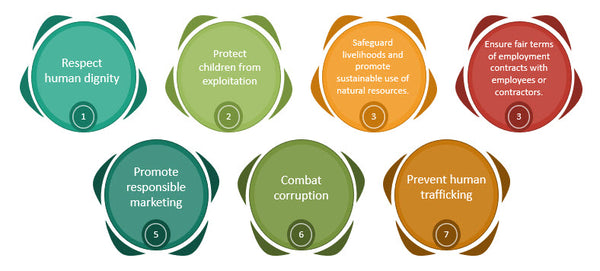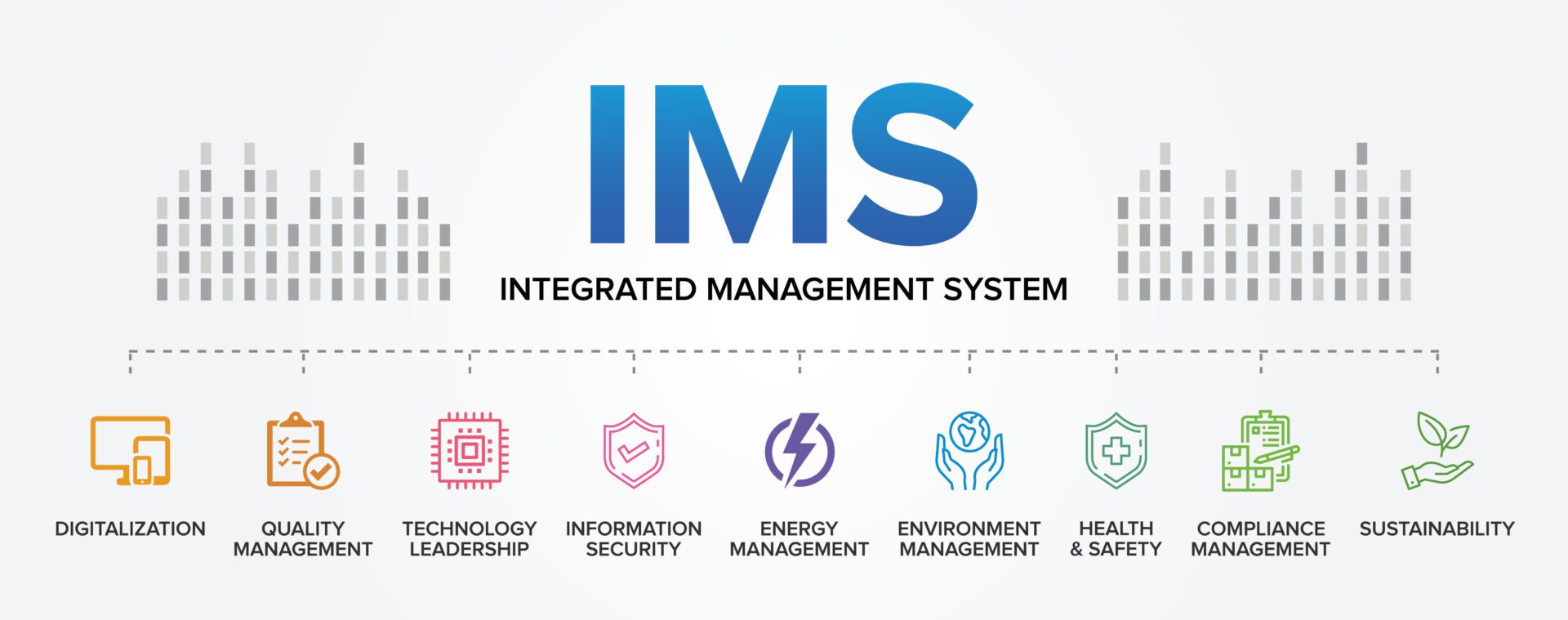Not all organizations recognize the importance of corporate social responsibility. Factors like industry, geographic location, and government regulation can influence a company’s motivation to “do the right thing.” To address this, the International Organization for Standardization introduced the ISO 26000 standard to help steer organizations in a more socially responsible direction. But before we move any further, let’s understand what is ISO 26000?
What is ISO 26000?

ISO 26000 is an international standard for corporate social responsibility developed to help organizations assess and address their social responsibilities. The most recent version of the standard, ISO 26000:2010, was last reviewed and confirmed in 2017.
More than 80 countries have since adopted ISO 26000:2010 as a national standard. These include the U.S., the U.K., Canada, Germany, and France as well as many developing countries. Thousands of coh3mpanies and organizations around the world use the standard, including global brands like Coca-Cola and Starbucks.
The evolution of ISO 26000
ISO 26000 was developed over a series of meetings and ongoing consultations that took place between 2005 and 2010. Approximately five hundred delegates representing six main stakeholder groups actively participated in the process. These representatives came from Industry, Government, NGO (non-governmental organizations), Labour, Consumer, and SSRO (Service, Support, Research, and Others – primarily academics and consultants).
The various groups and committees included participants from both “developing” and “developed” countries to present different economic and cultural perspectives. The final standard was the result of much deliberation and negotiation. This ensured that it addressed the goals and concerns of all stakeholder groups and that its guidance would be usable by all types of organizations and in any country.
7 Core principles of ISO 26000
To understand what is ISO 26000, we need to understand the seven key principles, which it views as the roots of socially responsible behavior:
- Accountability
- Transparency
- Ethical behaviour
- Respect for stakeholder interests
- Respect for the rule of law
- Respect for international norms of behavior
- Respect for human rights
ISO 26000 also identifies 7 core subjects of social responsibility. Each subject covers a variety of issues that need to be addressed.
1. Accountability
Businesses can demonstrate accountability by establishing clear channels for reporting, assessing, and rectifying their social and environmental impacts. Regular audits and transparent reporting mechanisms help uphold accountability.
2.Transparency:
Transparent communication of policies, practices, and performance indicators builds trust with stakeholders. This includes openly disclosing information about environmental practices, labor conditions, and community engagement efforts.
3. Ethical behavior:
Upholding ethical standards involves adhering to fair labor practices, combating corruption, and ensuring product safety and integrity. Businesses can integrate ethical considerations into decision-making processes and supply chain management.
4. Respect for stakeholder interests:
Engaging with stakeholders allows businesses to understand and address their diverse needs and concerns. This entails involving stakeholders in decision-making processes and actively seeking their feedback.
5. Respect for the rule of law:
Compliance with local and international laws and regulations is crucial for maintaining legitimacy and minimizing legal risks. Businesses should ensure that their operations align with relevant legal frameworks and standards.
6. Respect for international norms of behavior:
Embracing global standards and best practices promotes consistency and coherence in social responsibility efforts. Businesses can participate in industry initiatives and adhere to international guidelines to demonstrate commitment to global norms.
7. Respect for human rights:
Protecting and promoting human rights across all business activities is paramount. This includes ensuring fair treatment of employees, safeguarding against discrimination, and respecting the rights of communities affected by business operations.
By integrating these principles into their operations, businesses can cultivate a culture of social responsibility that not only benefits society but also enhances their long-term sustainability and reputation.
7 core subjects of ISO 26000
The 7 core subjects of ISO 26000 complement the 7 core principles by providing specific areas of focus for implementing those principles. The core principles serve as guiding values, while the core subjects offer practical application areas within an organization’s operations. Let’s understand what these 7 core subjects are:
- Organizational governance
- Human rights
- Labor practices
- The Environment
- Fair operating practices
- Consumer issues
- Community involvement and development

1. Organizational governance

ISO 26000 encourages organizations to consider accountability, transparency, and ethics in their decision-making process and governing practices. Specifically, this includes formal and informal processes as well as the organization’s norms and values. ISO offers guidance to help companies establish processes, systems, and other mechanisms to hold themselves accountable.
2. Human rights
Human rights are the universal freedoms that apply to all human beings, regardless of race, gender, language, religion, national origin, or other status. These rights are based on the principle of respect for the individual and aim to protect people from abuse, discrimination, and exploitation.
ISO 26000 provides guidance for companies to support human rights, particularly by:
- Allowing free organization and collective negotiation
- Providing equal employment opportunities
- Preventing all forms of discrimination
- Resolving grievances
- Seeking ways to prevent or mitigate adverse human rights impacts, including child labor
3. Labor practices
An organization’s labor practices must be consistent with its policies. This applies to an organization’s employees, but also to any work done on its behalf, such as subcontracted work. Responsible labor practices should address the following:
- Employment and contractual relationships
- Working conditions and social protection
- Social dialogue
- Health and safety at work
- Human development and training in the workplace

4. The environment

No matter where an organization is located, its decisions and activities will inevitably have an impact on the environment. This may include the use of resources, generation of pollution and waste, and damage to natural habitats.
ISO 26000 urges organizations to minimize their environmental impacts and ensure sustainable resource consumption. They are encouraged to adopt a holistic approach that considers the direct and indirect socio-economic, health, and environmental effects of their activities.
Among other things, organizations are urged to embrace initiatives to:
- Prevent pollution
- Use resources sustainably
- Mitigate and adapt to climate change
- Protect the environment, biodiversity, and the restoration of natural habitats
5. Fair operating practices
Fair operating practices address the way an organization interacts with others. ISO 26000 calls for organizations to deal ethically with customers, partners, suppliers, contractors, competitors, and government agencies to bring about positive results.
Fair operating practices include:
- Preventing corruption
- Responsible political involvement
- Fair competition
- Promoting social responsibility in the value chain
- Respecting property rights

6. Consumer issues
Organizations that provide products and services have certain responsibilities to consumers. ISO 26000 encourages companies to promote fair and sustainable economic and social development. A responsible approach to consumer issues includes:
- Fair marketing practices
- Protection of health and safety
- Sustainable consumption
- Consumer education
- Dispute resolution
- Data and privacy protection
- Upholding fair use
- Ensuring that essential products and services are available to everyone, including vulnerable or disadvantaged groups
7. Community involvement and development

All organizations have an impact on the communities where they operate, and their active participation can help ensure the well-being of these communities. In fact, community involvement and development are two of the most important ways organizations can contribute to a more sustainable society.
ISO 26000 offers guidance on:
- Active community involvement
- Support for civil institutions
- Promotion of education and culture
- Job creation and skills development
- Technology development and access
- Income and wealth creation
- Health promotion
- Social investment
ISO 26000 and Fair Operating Practices
As highlighted above, one of the seven core subjects of ISO 26000 is Fair operating practices. Fair operating practices encompass the way an organization employs its relationships with different organizations, both internally and externally, to foster positive outcomes. By adhering to fair operating practices, organizations can enhance their reputation, mitigate risks, and contribute to a more equitable and sustainable business environment. You will find below some real-world examples where these practices can be implemented.
1. Preventing corruption
Implementing strict policies and procedures to ensure transparency in procurement processes, including the use of competitive bidding, regular audits, and training programs to educate employees on anti-corruption laws and ethical business practices. For example, according to Iso.org, the Association of Upper Egypt for Education (AUEED), an NGO established in 1940, utilizes ISO 26000 by assessing its policies and procedures against international labor norms and the UN Convention against Corruption.
2. Responsible political involvement
Engaging in advocacy efforts to support legislation or policies that promote environmental sustainability, human rights, or social justice, while adhering to applicable laws and regulations governing lobbying activities and political contributions.
3. Fair competition
Ensuring fair and transparent pricing strategies, avoiding collusion with competitors, and refraining from engaging in predatory pricing or anti-competitive behavior to maintain a level playing field in the market.
4. Promoting social responsibility in the value chain
Collaborating with suppliers and partners to improve labor conditions, promote environmental sustainability, and support community development initiatives, such as providing training programs for workers, implementing fair trade practices, or investing in local infrastructure projects. Iso.org provides another example, this time featuring NCA Rouiba, a family-owned beverage company founded in 1966 in Algeria. Rouiba established a project committee to review and enhance contracts and codes of ethics with subcontractors and suppliers, integrating provisions related to occupational health and safety and environmental management. The company has integrated the diverse facets of social responsibility into its integrated management systems.
5. Respecting property rights
Establishing clear policies to protect intellectual property rights, including patents, trademarks, and copyrights, and enforcing these rights through legal means when necessary to prevent unauthorized use or infringement.
ISO 26000 vs. other international standards for corporate social responsibility
International standards of corporate social responsibility are frameworks, guidelines, or principles that organizations adopt to integrate ethical, social, and environmental considerations into their business operations and strategies. These standards provide a structured approach for businesses to fulfill their responsibilities to society, stakeholders, and the environment.
ISO 26000 stands out among international standards for corporate social responsibility (CSR) due to its comprehensive approach and non-certifiable nature. Unlike other ISO corporate social responsibility standards, such as ISO 14001 for environmental management or ISO 9001 for quality management, ISO 26000 provides guidelines rather than requirements for CSR. It emphasizes stakeholder engagement, transparency, ethical behavior, and respect for human rights, labor practices, and environmental concerns.
In contrast to sector-specific standards like the Global Reporting Initiative (GRI) or the Forest Stewardship Council (FSC), ISO 26000 offers a universal framework applicable to organizations of all types and sizes. While GRI focuses on sustainability reporting and FSC on responsible forestry, ISO 26000 provides a broader perspective on CSR, encompassing social, environmental, and economic dimensions. Additionally, ISO 26000 emphasizes continual improvement and integration of CSR into organizational processes rather than mere compliance. Thus, it serves as a flexible tool for enhancing social responsibility across diverse contexts globally.
2 unique aspects of ISO 26000 are listed below.
- IS0 26000 is voluntary.
Unlike other ISO corporate social responsibility standards, ISO 26000 is not intended to be used for certification or regulation. Since it does not contain requirements, it cannot serve as a basis for audits, conformity tests, or other compliance statements. Instead, it provides recommendations to help organizations improve aspects of corporate social responsibility. It encourages companies to go beyond legal compliance standards to contribute to sustainable development.
- IS0 26000 applies to ANY organization.
ISO 26000 is intended to help all types of organizations in the public, private, and non-profit sectors. The core subjects address issues relevant to every organization, regardless of size or location. They are meant to be adapted to any industry including energy, transportation, manufacturing, retail, and food. While early adopters of the standard were often multinational corporations, ISO 26000 was designed with the flexibility to be used by other types of organizations too, such as hospitals, schools, and not-for-profit charities.
Implementing ISO 26000 in your organization
Here’s a detailed breakdown of seven key steps for implementing a social responsibility policy using ISO 26000 guidance:
1. Understand what is ISO 26000
Ensure all stakeholders thoroughly grasp the principles and framework of ISO 26000. Utilize various online resources and training programs to educate managers and employees actively. Encourage hands-on learning to integrate socially responsible behaviors seamlessly into daily operations.
- Provide interactive online modules and workshops for thorough understanding.
- Foster discussion forums and Q&A sessions to address queries and clarify concepts.
- Incorporate case studies and real-life examples to illustrate the practical application of ISO 26000 principles.
2. Conduct comprehensive analysis
Conduct a comprehensive assessment of the organization’s current status across the seven core subjects outlined in ISO 26000. Analyze each subject meticulously to identify pertinent issues and evaluate their significance in alignment with the company’s overarching vision and strategy.
- Utilize internal and external experts to ensure thorough analysis.
- Gather data through surveys, interviews, and site visits for a comprehensive understanding.
- Engage cross-functional teams to ensure diverse perspectives are considered.
3. Prioritize relevant issues
Scrutinize the 37 specific issues within the core subjects and prioritize those most relevant to the organization. Establish clear and achievable improvement goals based on the identified issues. Ensure that the goals set are measurable, actionable, and aligned with the organization’s mission and values.
- Conduct a cost-benefit analysis to prioritize issues effectively.
- Engage stakeholders in the prioritization process to ensure alignment with their expectations.
- Set SMART (Specific, Measurable, Achievable, Relevant, Time-bound) goals for each prioritized issue.
4. Engage stakeholders proactively
Identify and engage stakeholders across various categories, including workers, clients, consumers, and suppliers. Initiate meaningful and two-way dialogues to understand their perspectives and expectations regarding social responsibility. Prioritize stakeholders based on their influence and relevance to the organization’s operations and objectives.
- Develop a stakeholder engagement plan outlining communication strategies and objectives.
- Use multiple channels such as meetings, surveys, and focus groups to engage stakeholders effectively.
- Provide regular updates and seek feedback to demonstrate responsiveness and commitment.
5. Develop action plans with clear timelines
Identify weaknesses and root causes within the organization’s current practices. Allocate necessary resources, such as time, funding, and expertise, to address these weaknesses effectively. Develop detailed action plans with clear timelines, milestones, and responsibilities assigned to specific individuals or teams. Regularly review and adjust the action plans as needed to adapt to changing circumstances.
- Break down action plans into smaller, manageable tasks for better execution.
- Assign clear roles and responsibilities to individuals and teams to ensure accountability.
- Monitor progress regularly and make adjustments as necessary to stay on track.
6. Implement transparent reporting practices
Establish a regular reporting mechanism to communicate the organization’s social responsibility performance to stakeholders. Ensure that the reports are honest, accurate, and comprehensive, providing insights into the organization’s progress, achievements, and areas for improvement. Consider using established reporting frameworks like GRI to enhance credibility and comparability.
- Develop standardized reporting templates to ensure consistency and clarity.
- Include both quantitative and qualitative data to provide a comprehensive view of performance.
- Solicit feedback from stakeholders on reporting practices to improve transparency and relevance.
7. Foster open and transparent communication
Cultivate a culture of open and transparent communication within the organization and with external stakeholders. Encourage feedback, suggestions, and constructive criticism from all stakeholders to foster continuous improvement. Demonstrate a genuine commitment to ethical practices and social responsibility through transparent communication and action.
- Establish regular communication channels, such as town hall meetings and newsletters, to keep stakeholders informed.
- Encourage a culture of open dialogue where diverse perspectives are valued and respected.
- Respond promptly and transparently to inquiries and concerns raised by stakeholders to build trust and credibility.
By following these steps and best practices, organizations can effectively implement a social responsibility policy aligned with ISO 26000, fostering positive impacts on society and enhancing their reputation as responsible corporate citizens.
ISO 26000 and sustainable development goals (SDGs)
According to iso.org, ISO 26000, as an international standard for corporate social responsibility, contributes to achieving the United Nations Sustainable Development Goals (SDGs) by guiding ethical and transparent business practices. It offers over 450 recommendations related to principles and addresses seven core subjects of social responsibility, aligning with the SDGs’ objectives. These recommendations help organizations address issues such as poverty, gender equality, and environmental sustainability. ISO 26000 emphasizes stakeholder engagement and compliance with international norms, fostering a holistic approach to sustainable development. It encourages organizations to integrate responsible behavior throughout their operations and relationships, promoting long-term societal and environmental well-being. Additionally, ISO 26000 aligns with international human rights conventions and labor practices, supporting SDGs related to social justice and economic growth. By implementing ISO 26000, organizations contribute to a more sustainable future by balancing the needs of environmental, social, and economic systems.
Benefits of ISO 26000 certification
ISO 26000 offers organizations and corporations actionable guidance to:
- Address social responsibility in a way that respects cultural, societal, environmental, legal, and economic differences.
- Implement the principles of social responsibility.
- Identify and communicate with stakeholders for more reliable, credible social responsibility reporting.
- Prioritize business performance, including the principles of continuous improvement.
- Increase customer and stakeholder satisfaction.
- Integrate and supplement existing ISO standards, government regulations, and international conventions.
- Increase general awareness of their social responsibility initiatives.
Challenges and criticisms of ISO 26000
Implementing international standards of corporate social responsibility such as ISO 26000 brings forth some common challenges. The guidelines, covering a wide array of topics such as environmental sustainability, human rights, and labor practices, present complexity, making comprehension and execution daunting for companies. This complexity is further exacerbated by resource constraints, particularly impacting small and medium-sized enterprises (SMEs) with limited financial and human resources to allocate towards implementation efforts. Cultural differences also pose significant hurdles as global guidelines may clash with local customs and laws, necessitating careful navigation and adaptation. Moreover, differing interpretations among stakeholders add another layer of complexity, potentially leading to confusion and inefficiencies in implementation. To address these challenges, companies must seek expert guidance, prioritize relevant guidelines, collaborate with local stakeholders, and foster a shared understanding among all parties involved.
According to “Understanding ISO 26000: A Practical Approach to Social Responsibility,” the concept of the “sphere of influence” articulated in ISO 26000 serves as a strategic response to critics’ concerns. Critics often express apprehension about the limitations of a company’s direct control over its social and environmental impacts, especially regarding supply chains and broader societal issues. However, ISO 26000 emphasizes that companies have a responsibility not only for their actions but also for the impacts of their decisions and activities within their sphere of influence. This includes suppliers, contractors, partners, and other entities associated with the company’s operations. By broadening the scope of responsibility beyond immediate operations, ISO 26000 encourages companies to assess and address their influence on social and environmental issues throughout their value chain. This proactive approach helps companies mitigate risks, identify opportunities for positive impact, and demonstrate leadership in promoting sustainable practices within their broader sphere of influence. Thus, the concept of the sphere of influence aligns with ISO 26000’s holistic perspective on corporate social responsibility, addressing critics’ concerns by emphasizing accountability and proactive engagement across interconnected systems and stakeholders.
The future of ISO 26000
Predictions for the future of ISO 26000 and CSR indicate several key trends. ISO 26000 is anticipated to witness increased stakeholder engagement, leveraging advanced methods like digital platforms and AI-driven sentiment analysis. Moreover, there will be a greater emphasis on aligning with Environmental, Social, and Governance (ESG) reporting frameworks, enhancing organizations’ ability to measure and communicate social responsibility efforts. Human rights, particularly labor rights, are poised to receive heightened attention within ISO 26000, aligning with international standards. Additionally, ISO 26000 is expected to adapt to diverse cultural and regulatory environments, offering tailored guidance for organizations. On the broader CSR front, economic pressures are projected to drive a greater emphasis on Return on Investment (ROI), necessitating direct ROI data to justify and secure budgets. Furthermore, transformative CSR practices, known as CSR 2.0, will prioritize creativity and innovative solutions to complex social and environmental challenges. These trends underscore a dynamic future for ISO 26000 and CSR, marked by enhanced stakeholder engagement, alignment with ESG frameworks, and a stronger focus on human rights and creativity-driven solutions.
How organizations can stay ahead in their CSR efforts
It is possible to make great strides with corporate social responsibility even without implementing the ISO 26000 standard. In most cases, organizations can begin by examining how they might integrate CSR initiatives into existing systems, policies, and structures.
The following 7 steps offer a rough roadmap for integrating CSR into an organization:
1. Consider the organization’s DNA
Assess the basic nature of the organization. This includes its mission, values, principles, code of conduct, internal and external stakeholders, and value chain, among other things.
2. Evaluate the organization’s current approach
Look at how the organization currently manages accountability. Assess the relevance of the different CSR subjects and their potential impacts on the organization. Prioritize them according to existing requirements, objectives, and resources.
3. Implement basic practices to integrate CSR Throughout the Organization
Explore opportunities to raise awareness and develop competencies regarding corporate social responsibility. Determine what steps the business should take to integrate CSR into its governance, systems, and procedures.Communicate your CSR efforts
4. Communicate your CSR efforts
Determine the strategic purpose of communicating social responsibility, and which forms of communication to use. Ensure the information to be shared is accurate, complete, understandable, responsible, and timely.
5. Improve your credibility in Corporate Social Responsibility
Explore opportunities to manage stakeholder issues and grievances more effectively. Consider how you can communicate these improvements in a way that improves public perceptions about the organization’s responsibility.
6. Review and improve CSR practices on an ongoing basis
After you integrate CSR initiatives into your practices and can credibly demonstrate their impacts, focus on improving your overall CSR performance. Implement processes to monitor your CSR activities, track your progress, and measure outcomes of individual initiatives. Look for ways to improve data collection and management to derive more meaning from this information. Fit-for-purpose software often includes Analytics tools to help you draw clear insights from your data and inform your strategic decisions.
7. Implement voluntary CSR initiatives
When you have solid CSR practices in place and can report your efforts in a meaningful, credible manner, look for ways to turn CSR into a strategic advantage to grow your organization.





